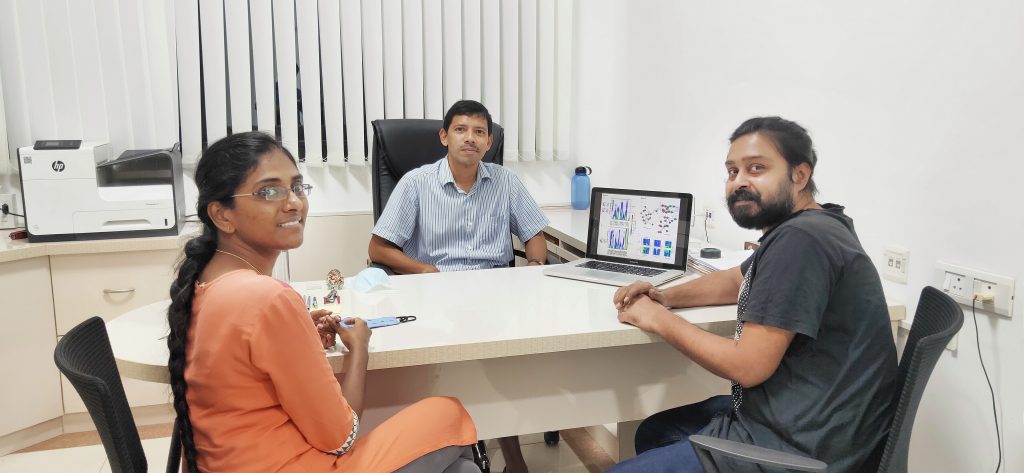AIDS is one of the major causes of death among youth in the world. The battle against this disease has been going on for many years now. Yet scientists are at a loss to find a cure for this deadly disease. Moreover, emergence of multidrug resistant HIV variants has compromised the effectiveness of current therapeutic options. Currently, an estimated 37.9 million people are living with HIV-AIDS, and nearly 2.3 million new people get affected every year.
Professor Sanjib Senapati and his research scholars, Mohd Ahsan and Chinmai Pindi have stumbled upon a revolutionary new idea, which could help develop a more effective drug against HIV-AIDS. An enzyme that is usually targeted to fight AIDS is the HIV-1 protease (HIVPR). This enzyme is an aspartyl protease that is functionally active in its dimeric form. Usually the drugs that are designed to inactivate this enzyme bind to its active site and hamper the natural process of proteolysis, resulting in the formation of non-infectious virions.
Over the years, scientists have used different strategies like maximizing the inhibitor-protein backbone interactions, utilizing the size-to-shape ratio and the vander Waals interaction information of substrates to design efficient drugs. Though these drugs were effective, their prolonged use has resulted in resistant HIV variants making them ineffective.
The pressing need of better drugs to combat resistant HIV and recent NMR and neutron diffraction data encouraged Prof. Senapati to revisit the patterns of substrate and inhibitor binding in the active site of HIV protease to improve the drug design strategies. By using the state-of-art computational techniques his team has uncovered various interesting facts.
Results from their Molecular Dynamics (MD) simulation studies revealed the presence of a strong and asymmetrical electric field in the HIV protease active site that is complemented by the bound substrate. However, the existing drugs and inhibitors lack this electrostatic complementarity. These electrostatic forces are way more powerful than the van der Waals forces, which have been fixated upon by scientists for so long.

Thus, Professor Senapati and his team propose that the current drug design strategies should embrace both electrostatics and van der Waals interactions to complement the HIVPR active site architecture. Further, the team believes that such compounds will be effective against both wild type and resistant HIV variants.
Dr. Prof. Chandra Verma, Ph.D. from Bioinformatics Institute, A*STAR, Singapore comments; “In 2019, there were 39 million people in the world with HIV/AID. Drugs exist to combat the disease and yet there is a desperate
need to find novel drugs that can hopefully eliminate the virus. A crucial part of the HIV virus is the protease which has been a major drug target for several FDA approved drugs in the market. Unfortunately, the emergence of drug resistant mutations in this protease has rendered these drugs ineffective. Prof Senapati and coworkers have made a significant breakthrough in the fight.
They began to look at the protease and its mutants from a novel angle and, after detailed analyses of their structures and dynamics, discovered that the specificity of its substrate relies on the presence of an asymmetrical electrostatic potential that characterizes the enzyme active site. Next, they analyzed all the drugs that target this protease and found that surprisingly, these drugs only exploit the packing/van der Waals interactions with the protease and have not been designed to exploit this unique electrostatic characteristic.
This is a remarkable discovery and one that will hopefully open a new window into novel screening/designing efforts that will lead to the availability of drugs that can combat both the wild type and the resistant protease, satisfying to an unmet need in the arsenal of drugs used to treat the disease”
Let us hope that this study helps in the long-awaited cure for combating AIDS.
Article by: Mr. Akshay Anantharaman
Here is the link to the research article:
Link to the article: https://drive.google.com/file/d/1h_HXEZi6QQGSVuTwF9SokOchvabb03j_/view?usp=sharing










